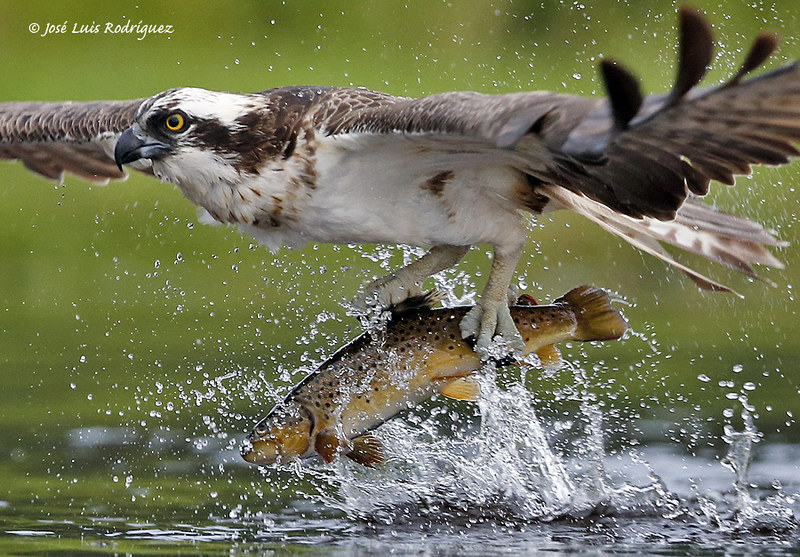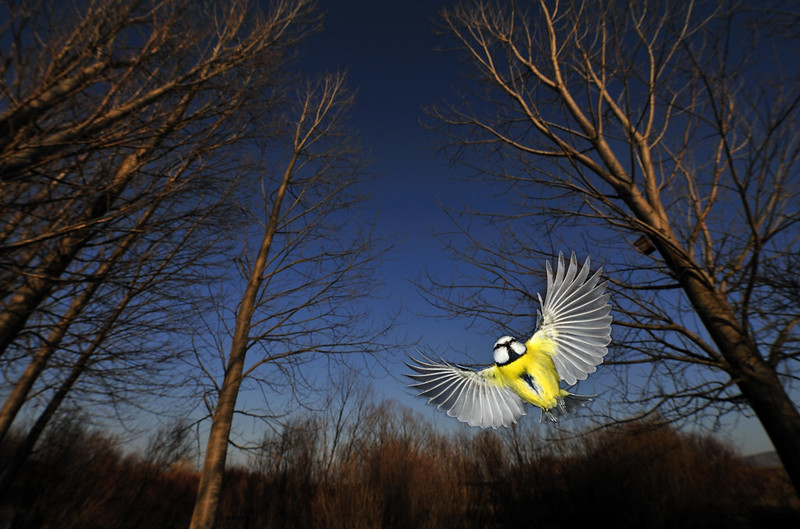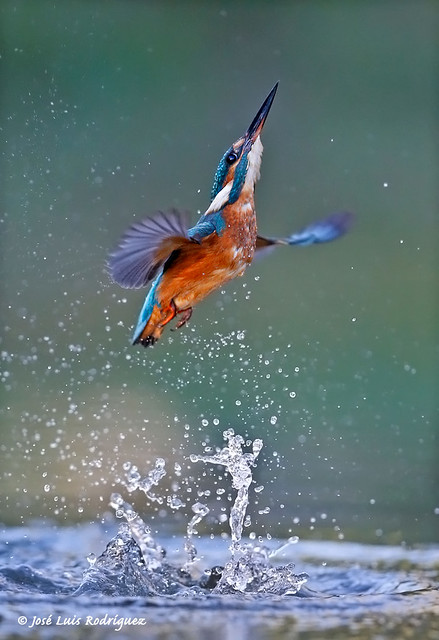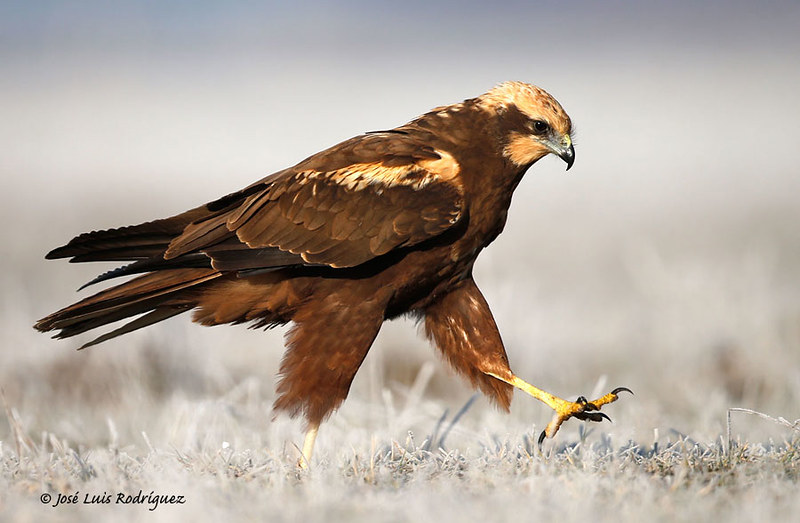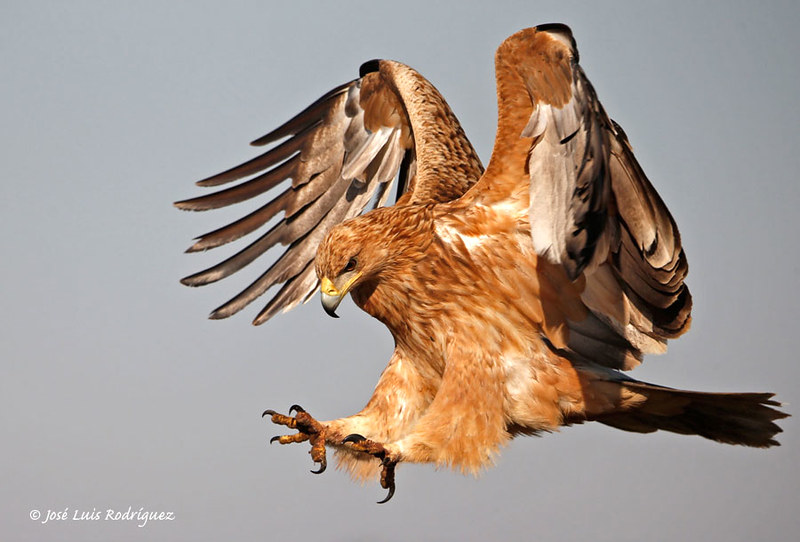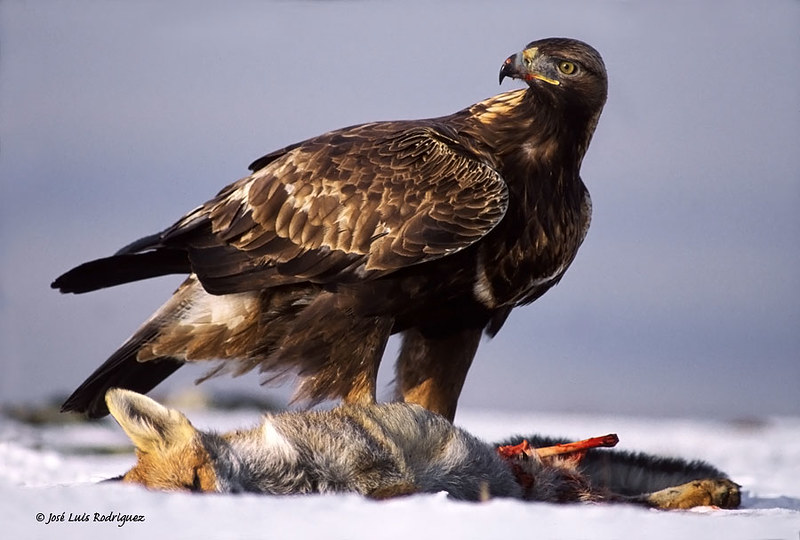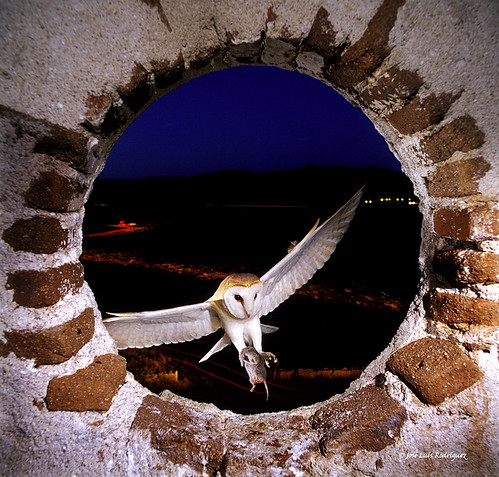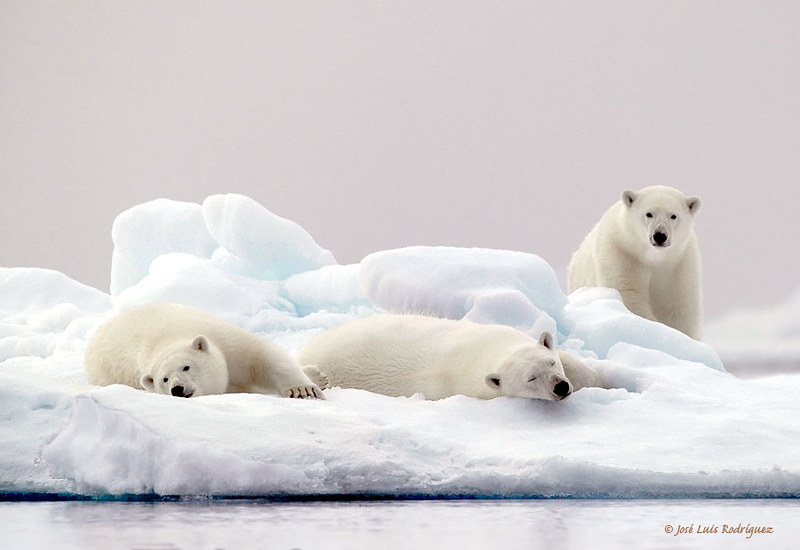With their fast fly, the iridescent feathers fills the small pond with blue and orange bursts. Their nervous moves bring it from the troglodyte nest to the branch suspended over the water, thanks to its fast manoeuvres in the air. Each plummet and each exit from the nest crosses the infrared barrier, making the wit of flashes fire to allow the photographer to increase the number of snapshots in the film of the camera.
We are facing the challenging and creative work of a high speed specialist born in Salobral (Ávila). In Spain, he is a true pioneer of this technique, used to reveal the most unusual postures and private activities of the animals. His personal file hoards over 500,000 slides and 100,000 digital files. Among his photo gallery, birds of prey and lots of birds in flight stand out.
With over 50 books, he proves his experience as a writer, and his guides of fauna and spaces reflect a great educational work. His motto “you best protect what you know best” has attracted the attention of the youngest ones with his practical pocket guides. We can’t forget his work in newspapers and magazines like the now defunct Natura. Nowadays, he combines photography with the company Anades, which manages hides for all kinds of birds, as well as videographic and museum productions.
We talked to José Luis Rodríguez and we bring you the exclusive of a unique and intimate interview, where we try to discover not only the artist, but also the naturalist.
- Question: During more than 36 years devoted to nature photography, which is the photographic genre to which you have dedicated more time? And the one that has brought you more joy?
- Answer: Although I am an inveterate “preyer”, and surely birds have won the first prize during these days, I am sure that regarding effort and satisfactions the so-called “high speed” is the predominant practice. Getting “impossible” and unique pictures is what has motivated me the most (and still does). It is said that I was one of the leaders in this kind of photography in Spain, and maybe it is true, but that is not important. What is important is that, somehow or other, the trend has strengthened and many people practice it now, although it is also true that many lovers of that technique just “follow”, that is, they emulate others, copy their work, without noticing that it is a mistake which doesn’t contribute to nature photography nor to their own curriculum.
- Question: During the last years, digital photography has spread among the public. But what equipment do you recommend to our readers in order to start with bird photography? What advice should they follow when taking their snapshots?
- Answer: I think the eye and mind do more than the camera itself, so I think you can take good pictures with any device that allows to capture them. An example are mobile phones. Nowadays, everybody carry them, which means they have a camera in their pocket. The important thing is to see the snapshot.In order to photograph birds with some degree of success in respect of framing and resolution, I understand a zoom lens is necessary. In pro and semipro photography, the 500mm lens has become very popular, but you can get good pictures with lower optics, like the 300mm lens, or even with a 100-500 zoom or similar.Regarding advice: be patient and cautious, come closer stealthily or use hides, which is the resource with the best results.
- Question: Which picture would you like to take that you haven’t achieved yet?
- Answer: The Common Kingfisher seen inside the water in an almost vertical plane. I have been working on this photograph for years and I don’t have it yet, but the effort hasn’t been in vain, because when I was working, I accomplished other challenges with this species and I probably have already —and I say it without the slightest desire for vanity or to disqualify anyone— the best photograph collection in the world of Common Kingfisher in action.
- Question: After producing so many natural spaces guides, which is your favourite space to see and photograph birds in Europe?
- Answer: I honestly can’t mention a specific one without underestimating others. I think the whole Spain is an ornithological paradise, a paradise where things are changing for the better to make things easier for bird photography lovers. Today it’s very easy to photograph birds which were almost impossible to photograph before. You just have to choose the day and place with the hide specially dedicated to that species. It is true that you have to pay, but it is undoubtedly worth it, because it takes away many troubles. Those who speak about satisfaction in the task of searching and approaching, which can take weeks or months, are right if they see it that way, but the real satisfaction —from my point of view— lies in the trance of having the bird in the frame with the light, setting and pose you really want.
- Question: Tell us three of your more than 50 published books which summarise your career.
- Answer: I think, in order:
- -Monfragüe, sierra brava (“Monfragüe, Brave Mountains”)
- -Naturaleza en acción (“Nature in Action)”
- -Alas y garras (“Wings and Claws”)
- Question: In connection with the previous question. From your first book, Monfragüe, sierra brava, our favourite chapter is the one dedicated to the metal tower, which was necessary to assemble in order to make a photo reportage about the Imperial Eagle. Can you tell us about that odyssey?
- Answer: It was such an adventure, and among the memories I treasure are the excitement of seeing the eagle in the frame during its first arrival, the intensity of the eagle’s look inspecting the hide —or maybe the zoom lenses sticking out—, the astonishment and joy face of my partner… But not so pleasant memories also come to my mind: the heat, strong heat, my back burnt by the sun, the thirst and sweat, which made me be constantly soaked inside the canvas tent.
- Question: In another book, Rapaces, alas y garras (“Birds of Prey, Wings and Claws”) you point out the grandiosity of these birds. Can you tell us any story about the hard work, those many hours staying motionless in hides and coping with the inclemencies of each habitat?
- Answer: During the Golden Eagle sessions on the snow with the fox I remember being as cold as I have ever been, permanently -4ºC during the three days I was trying. I remember a terrible pain on my knees, surely caused by the cold. And I also remember that it vanished when the eagle arrived and started eating with the best light I could have imagined.
- Question: From the multiple photos of your gallery, we are highly impressed by the swallow crossing a window frame. How did you get such a snapshot?
- Answer: It is not hard if you have the place and the appropriate infrared and flash equipment. After that, it is just a matter of trying, of leaving the swallow fly through the window again and again. The possibility of changing the position of the flashes or modifying the focus point after seeing the first results will help improve the take.
- Question: From the photographic hides that you offer in your company, Anades, we got surprised by the kestrel barn hide. Tell us how the idea of this project emerged and what it is about.
- Answer: The kestrel barn hide is the adaptation of the tower of an old country house to a photographic observatory. It has windows on the east and west sides, where we have placed spy glasses, which guarantee the peace of the birds, preventing the movement of the lenses from disturbing their comings and goings.
- Question: To conclude, can you advance to our readers which project or work are you working on at the moment?
- Answer: I am working on two: one is extensive and distant —far away from the work scenery—, and consists of photographing the “white” fauna, that is, the one that exists in the frozen areas of the planet; the other one is close, here in Spain, with the nocturnal species on the spotlight, all of them photographed within the darkest framework of the night.
We hope to have brought closer the work of this naturalist, who has given us unique moments of our bird fauna by the means of photography. From these lines we would like to open a collaboration, to allow this professional to help you improve your technique when taking quality snapshots. Thank you for bringing us a piece of nature in each picture. Thank you for your time and dedication, José Luis.

